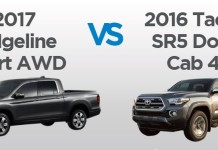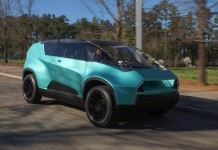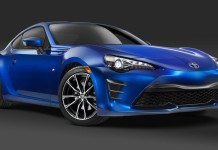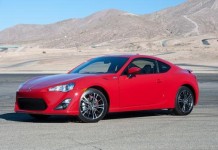Since its launch in the mid-1990s, the Toyota Avalon has been Toyota’s only full-size sedan. It has always been a solid performer, with standard V6 power, lots of interior space and a reputation for reliability and durability. The first two Avalon models were often criticized for their humdrum style, however.
That changed a few years ago when Toyota gave the Avalon a complete overhaul for the third-generation model. Inside and out, the new design looks upscale and refined. Major mechanical developments — including a powerful new V6 and a more capable suspension — pushed the level of performance to a higher standard. Even the base versions of the Toyota Avalon are equipped with many standard features.
Current Toyota Avalon
Engineered and built in the United States, the third-generation Toyota Avalon debuted for the 2005 model year. Developed and built with American roads in mind, it’s big, stable and powerful. A 3.5-liter V6 pumps out a robust 268 horsepower and 248 pound-feet of torque. A five-speed automatic transmission comes standard. The front-drive Avalon is based on a heavily modified version of the previous-generation Camry chassis.
Unlike previous Avalons, the current model cannot be had with a front bench seat. But there is ample room in the front and plenty of legroom to stretch out in back, where a nearly flat floor allows three adults to sit comfortably. The materials are all first-rate. Front seat-mounted side airbags and full-length side curtain airbags are standard. Traction control, stability control and antilock brakes with brake assist are also standard on all models.
There are four trim levels: XL, Touring, XLS and Limited. Even the base XL comes loaded with standard equipment. The Touring model is the sporty Avalon, with 17-inch wheels, a more firmly tuned suspension, an all-black interior and aluminum trim detail. The XLS is more upscale with premium features, including a moonroof and a six-CD changer. The leather-lined Limited serves as the model’s top-of-the-line trim.
In road tests and reviews, Toyota Avalon performed as excellent large sedan. Highway driving is luxurious. The V6 engine pulls well, is smooth and posts impressive fuel economy numbers. Although the Touring trim handles adequately, the Avalon should not be mistaken for a sport sedan. It is a full-size car with qualities that lean toward comfort over athletics. Downsides to the Avalon are few. Main complaints concern the rear seat (it doesn’t fold down to expand luggage capacity) and a slightly dull persona that some buyers might find off-putting.
Changes for the third-gen Avalon have been minimal. The 3.5-liter V6 was initially rated for 280 hp, but new SAE rating procedures dropped that to the current 268 hp starting with the 2006 model year. Actual performance was unaffected.
Past Toyota Avalon models
Early generations of the Toyota Avalon were solid entries in the full-size sedan market. They were built in the U.S. also but were sometimes criticized for being too close to the Camry in look and feel.
With the second-generation Avalon, sold from 2000-’04, Toyota made a number of improvements over the first version. Again available in XL and XLS trims, the second-gen Avalon was roomier and more technologically advanced. Optional stability control (Toyota’s Vehicle Skid Control) and brake assist features were added to improve safety. The 3.0-liter V6 was equipped with variable valve timing, providing a modest power increase over the previous generation with a peak of 210 hp. In road tests, we commented that the second-gen Avalon wasn’t a particularly interesting car to drive, but it countered with plenty of dependability, comfort and smoothness
The original Toyota Avalon, sold from 1995-’99, came in two trims (XL and XLS) and had a 192-hp 3.0-liter V6 and a four-speed automatic transmission. Minor engine revisions for the 1997 model year saw the output of the V6 increase to 200 hp.
For both of these previous generations, Toyota did not make many significant changes. Therefore, used-Avalon shoppers should focus more on the condition and mileage of the vehicle rather than a specific year.
| Engine | 3.5-liter DOHC 24-valve Dual VVT-i V6 268 hp @ 6200 rpm 248 lb.-ft. @ 4700 rpm | |||
| Ignition | Electronic, with Toyota Direct Ignition | |||
| Transmission | 5-speed electronically controlled automatic overdrive transmission with intelligence (ECT-i) and sequential shift | |||
| Drivetrain | Front engine, front-wheel drive | |||
| Body construction | Unitized body with front and rear anti-vibration sub-frames | |||
| Suspension | MacPherson strut front suspension with offset coil springs and stabilizer bar; dual-link independent MacPherson strut rear suspension with offset coil springs and stabilizer bar (sport-tuned on Touring) | |||
| Steering | Engine speed-sensing variable-assist power rack-and-pinion | |||
| Turning circle diameter, curb to curb (ft.) | 36.9 | |||
| Brakes | Power-assisted with 11.7-in. front ventilated disc/10.9-in. rear solid disc with Anti-lock Brake System (ABS) and Electronic Brake-force Distribution (EBD) | |||








